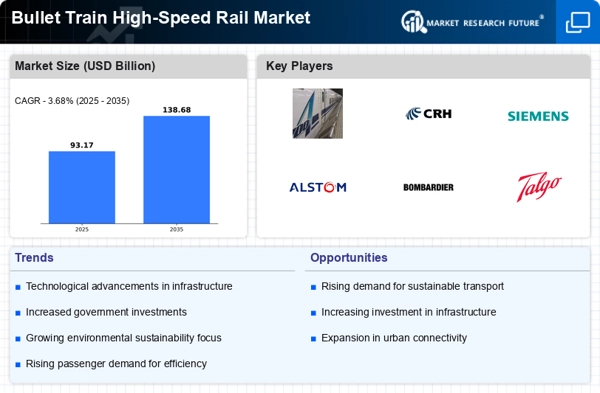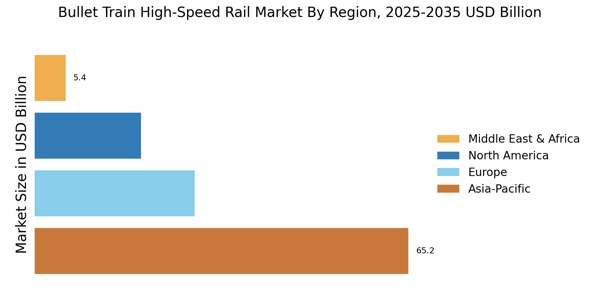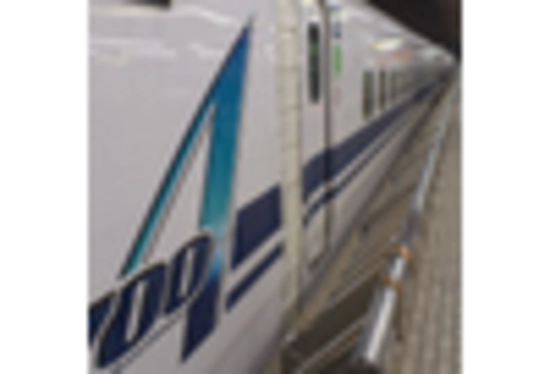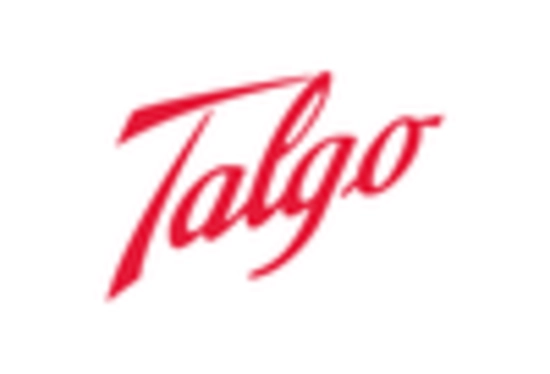Increasing Urbanization
The Bullet Train High-Speed Rail Market is experiencing a surge in demand due to increasing urbanization. As populations in urban areas continue to grow, the need for efficient transportation solutions becomes paramount. High-speed rail systems offer a viable alternative to congested roadways and overburdened airports. In many regions, urban centers are expanding, leading to longer commutes and a greater need for rapid transit options. According to recent data, urban areas are projected to house over 68% of the world's population by 2050, which could drive investments in high-speed rail infrastructure. This trend suggests that the Bullet Train High-Speed Rail Market will likely see substantial growth as cities seek to enhance connectivity and reduce travel times.
Technological Innovations
Technological innovations are a driving force in the Bullet Train High-Speed Rail Market. Advances in rail technology, such as improved train designs, enhanced safety features, and more efficient propulsion systems, are making high-speed rail more attractive to both operators and passengers. Innovations like magnetic levitation and automated train control systems are not only increasing speeds but also enhancing safety and reliability. Furthermore, the integration of digital technologies, such as real-time tracking and smart ticketing, is improving the overall passenger experience. As these technologies continue to evolve, they are expected to contribute significantly to the growth of the Bullet Train High-Speed Rail Market, making it a more competitive option against other forms of transportation.
Government Investments in Infrastructure
Government investments in infrastructure play a crucial role in the Bullet Train High-Speed Rail Market. Many countries are recognizing the importance of modernizing their transportation networks to support economic growth and sustainability. For instance, several nations have allocated significant budgets for the development of high-speed rail systems, with some estimates indicating that investments could reach upwards of 100 billion dollars in the next decade. These investments not only enhance the efficiency of transportation but also create jobs and stimulate local economies. As governments prioritize infrastructure development, the Bullet Train High-Speed Rail Market is poised to benefit from increased funding and support, leading to expanded networks and improved services.
Environmental Concerns and Sustainability
Environmental concerns are increasingly influencing the Bullet Train High-Speed Rail Market. As awareness of climate change and pollution rises, there is a growing demand for sustainable transportation solutions. High-speed rail systems are often viewed as a greener alternative to traditional modes of transport, such as cars and airplanes, due to their lower carbon emissions per passenger mile. Recent studies indicate that trains can emit up to 45% less carbon dioxide compared to cars. This shift towards sustainability is prompting governments and private entities to invest in high-speed rail projects, thereby enhancing the Bullet Train High-Speed Rail Market. The emphasis on eco-friendly transportation options is likely to drive further innovation and expansion in this sector.
Rising Demand for Efficient Transportation
The rising demand for efficient transportation solutions is a key driver of the Bullet Train High-Speed Rail Market. As economies grow and populations expand, the need for fast, reliable, and cost-effective travel options becomes increasingly critical. High-speed rail offers a solution that can significantly reduce travel times between major cities, making it an appealing choice for both business and leisure travelers. Recent market analyses suggest that the demand for high-speed rail services is expected to increase by over 30% in the next five years. This trend indicates a shift in consumer preferences towards more efficient modes of transport, which is likely to bolster the Bullet Train High-Speed Rail Market as operators respond to this growing demand.


















Leave a Comment